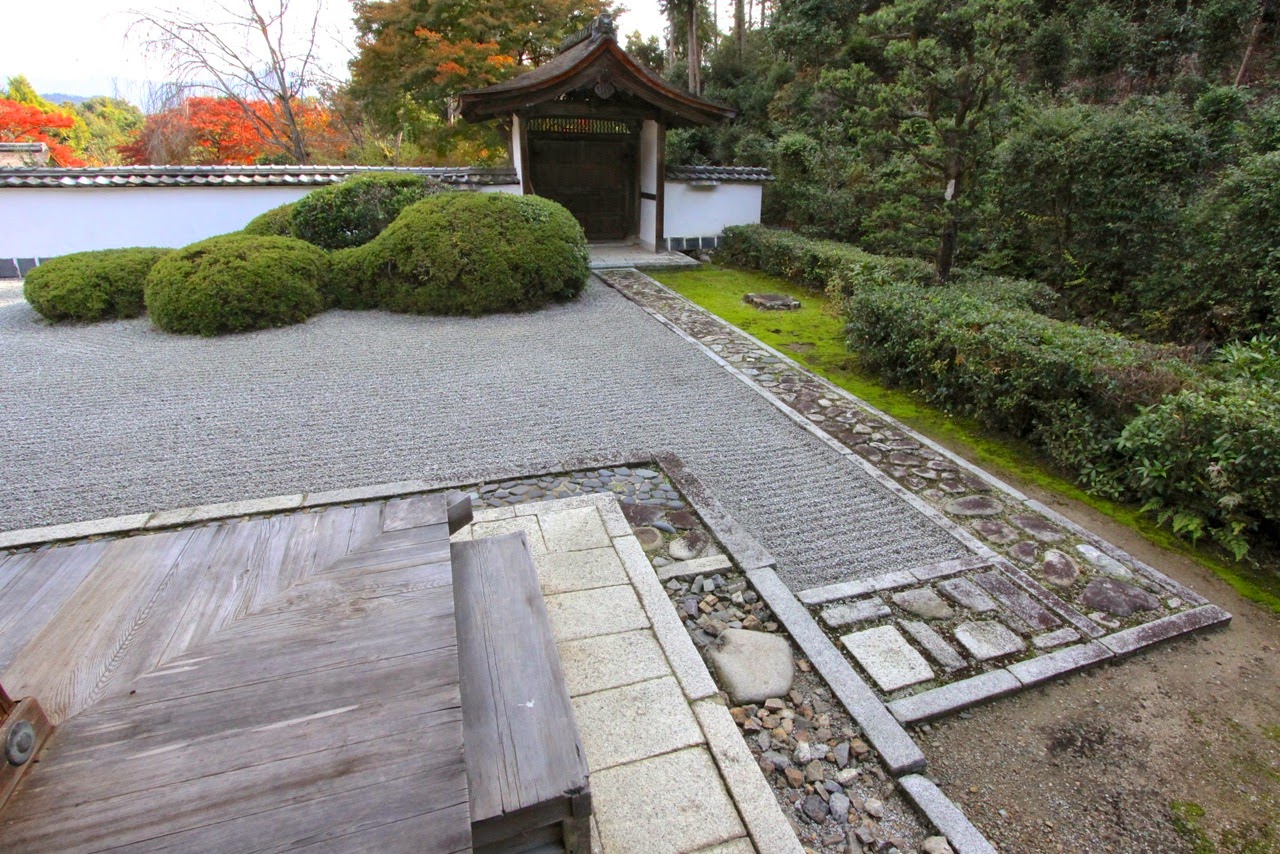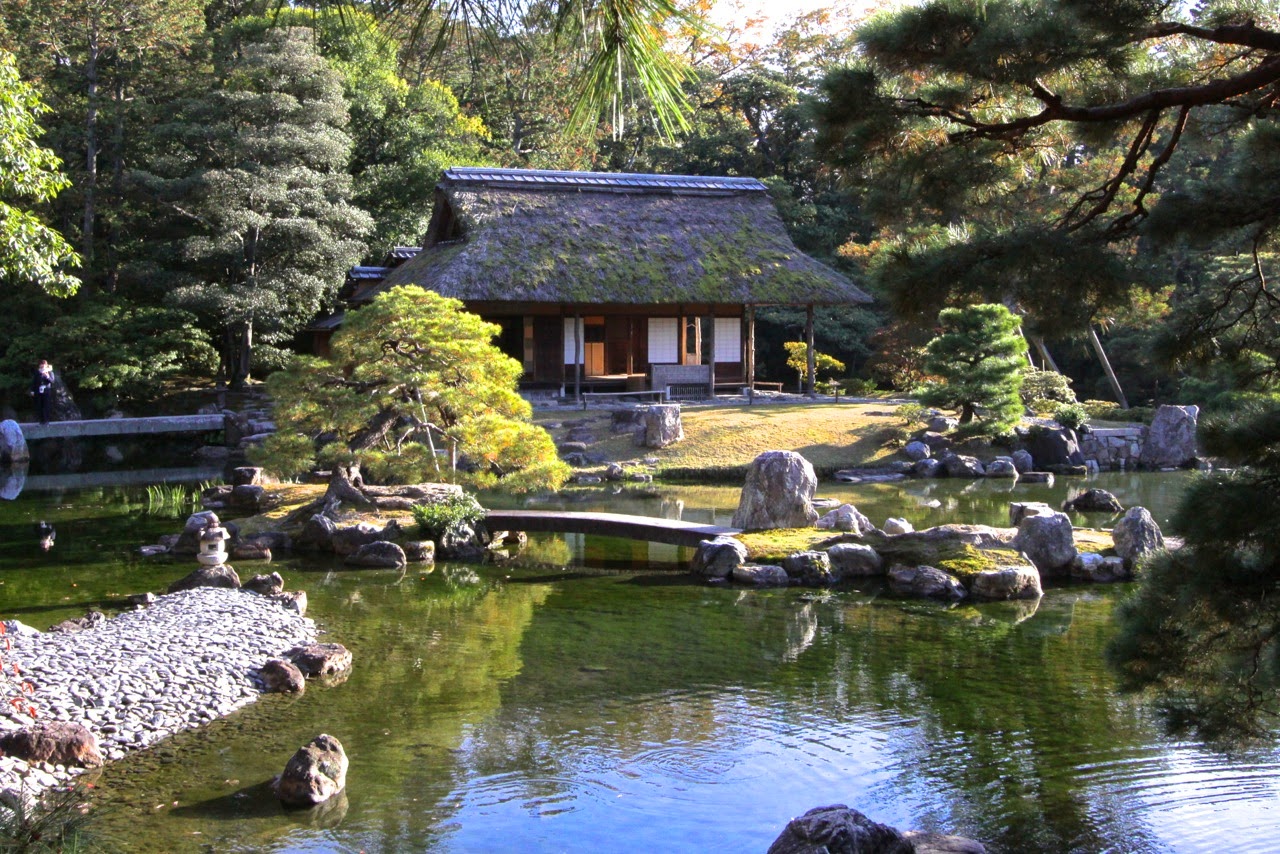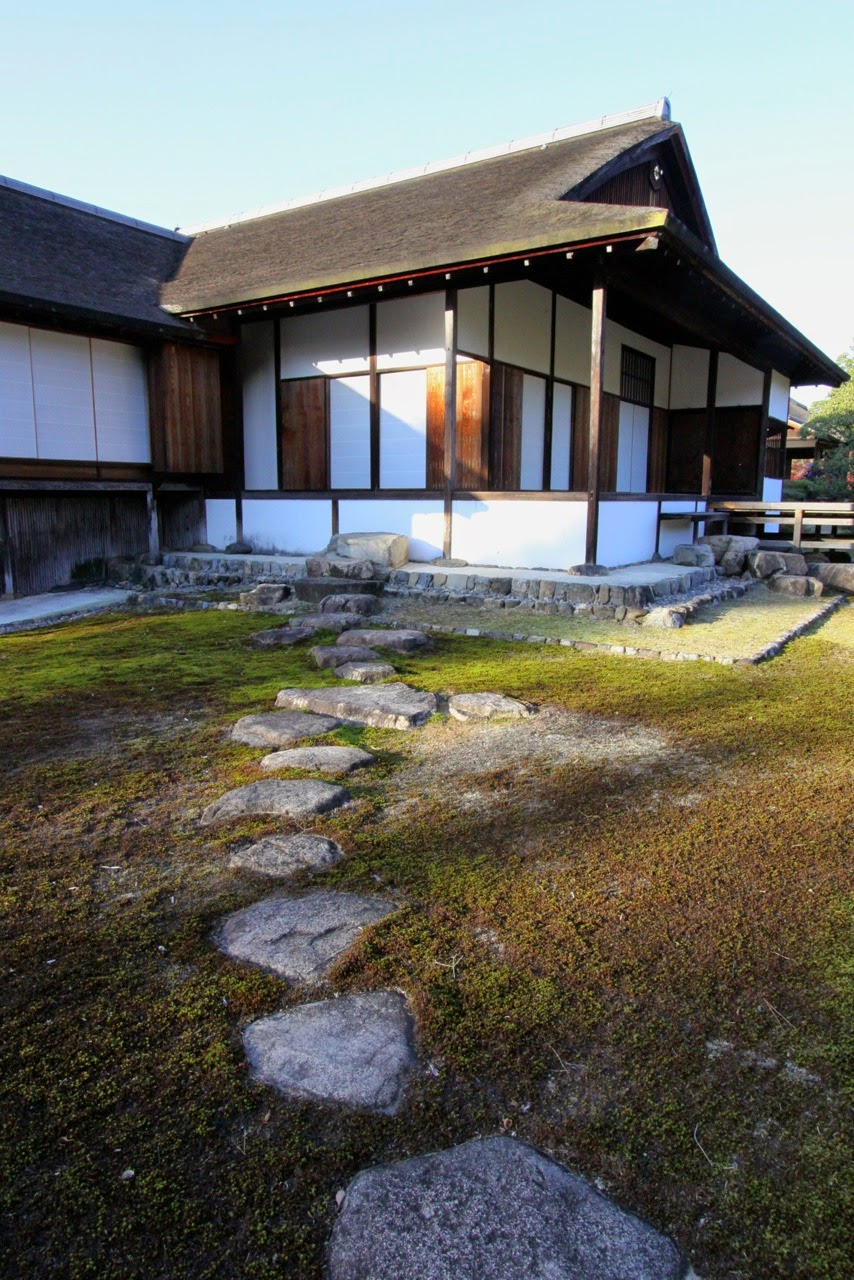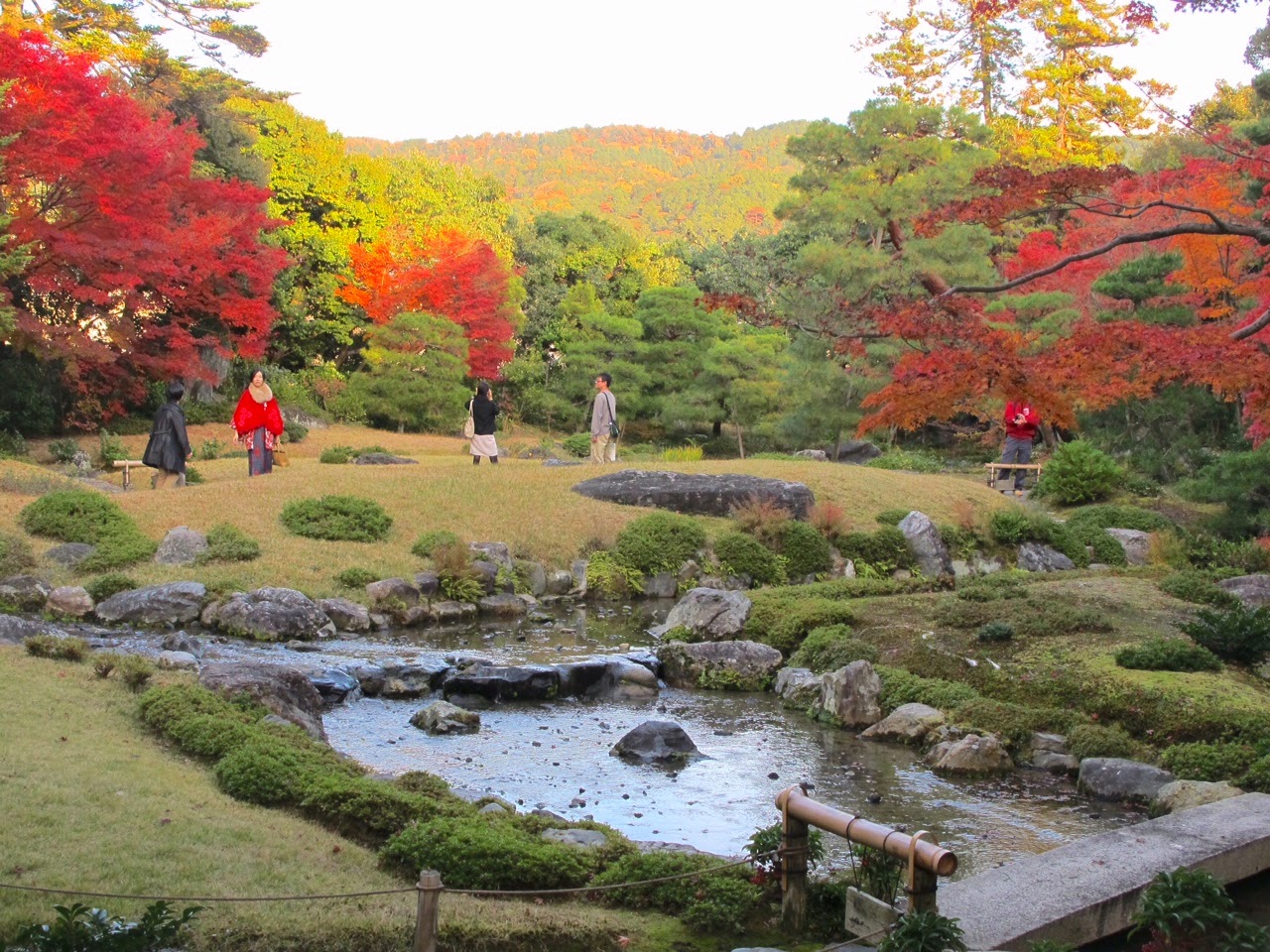6.) MODERN ERA (1868 - )
 |
| MODERN ERA (1868 - ) ZHIHŌ-IN. Photo by Dewey Webster |
• MODERN ERA (1868 - ) ZHIHŌ-IN
In the ‘60’s this temple had Mirei Shigemori design its gardens in a contemporary take on traditional karesansui (“dry landscape) conventions. In this one, The Garden of the Cross, it is not a turtle island harking to Daoism, but it is a cross, referring to the icon of Christianity, which he has designed. The stones on an angle to the walkway are the upright; the three from the dark on in the foreground, the speckled one in the middle, and the hard to see one in the hedge, are the cross bar. If you extend the upright under the walkway at the end….
 |
| MODERN ERA (1868 - ) ZHIHŌ-IN. Photo by Dewey Webster |
• MODERN ERA (1868 - ) ZHIHŌ-IN
…it terminates in the stone lantern. Look familiar? It is an Oribe, similar to the one in our tea garden. Hard to see but in its base there is a carving of a monk-like figure. During the 17th – 19th Centuries of oppression of Christianity, the Oribe was often found in homes of “Hidden Christians” who could pray to it as the Cross of Calvary without arousing official suspicion.
 |
| MODERN ERA (1868 - ) KENNIN-JI. Photo by Dewey Webster |
• MODERN ERA (1868 - ) KENNIN-JI
A recent member of the SJG community, Mark Bourne suggested we visit Chōontei (“Sound of Waves Garden”), which he worked on while apprenticing to the master landscape gardener Yasuo Kitayama. The central stone arrangement represents the Buddha and his two attendants; one in the foreground, a praying believer, and, on the left, a stone for seated meditation.
 |
| MODERN ERA (1868 - ) KENNIN-JI. Photo by Dewey Webster |
• MODERN ERA (1868 - ) KENNIN-JI
I was surprised by the number of women (and men) walking the streets and gardens in kimono, so I asked about it.
Seems the Mayor is promoting the wearing of kimono, indeed he does so most frequently. And he has gotten various tourist related associations (taxi, tourist sites, hotels, restaurants) to back it by having discounts for guests who also wear them.
What if you no longer have kimono in the bottom of your dresser, or do not wish to lug them to Kyoto when you visit? No problem, there are kimono rental stores at your service.
 |
| MODERN ERA (1868 - ) ZHIHŌ-IN. Photo by Dewey Webster |
• MODERN ERA (1868 - ) ZHIHŌ-IN
Let’s close with two gardens that show the breadth of design of View Gardens. Here, the Main Garden at Zhihō-in, also by Mirei ShIgemori, uses deeply raked gravel and sharp stones to evoke the energy of rough waves and rugged rocky islands.
 |
| MODERN ERA (1868 - ) KOTŌ-IN. Photo by Dewey Webster |
• MODERN ERA (1868 - ) KOTŌ-IN
And here, the Main Garden at Kotō-in, the greens of moss, dappled with fallen maple leaves, envelop one with a sense of boundless calm and serenity.
新年おめでとうございます
Shinnen omedetou gozaimasu
("New year congradulations")
HAPPY NEW YEAR 2015!


















































